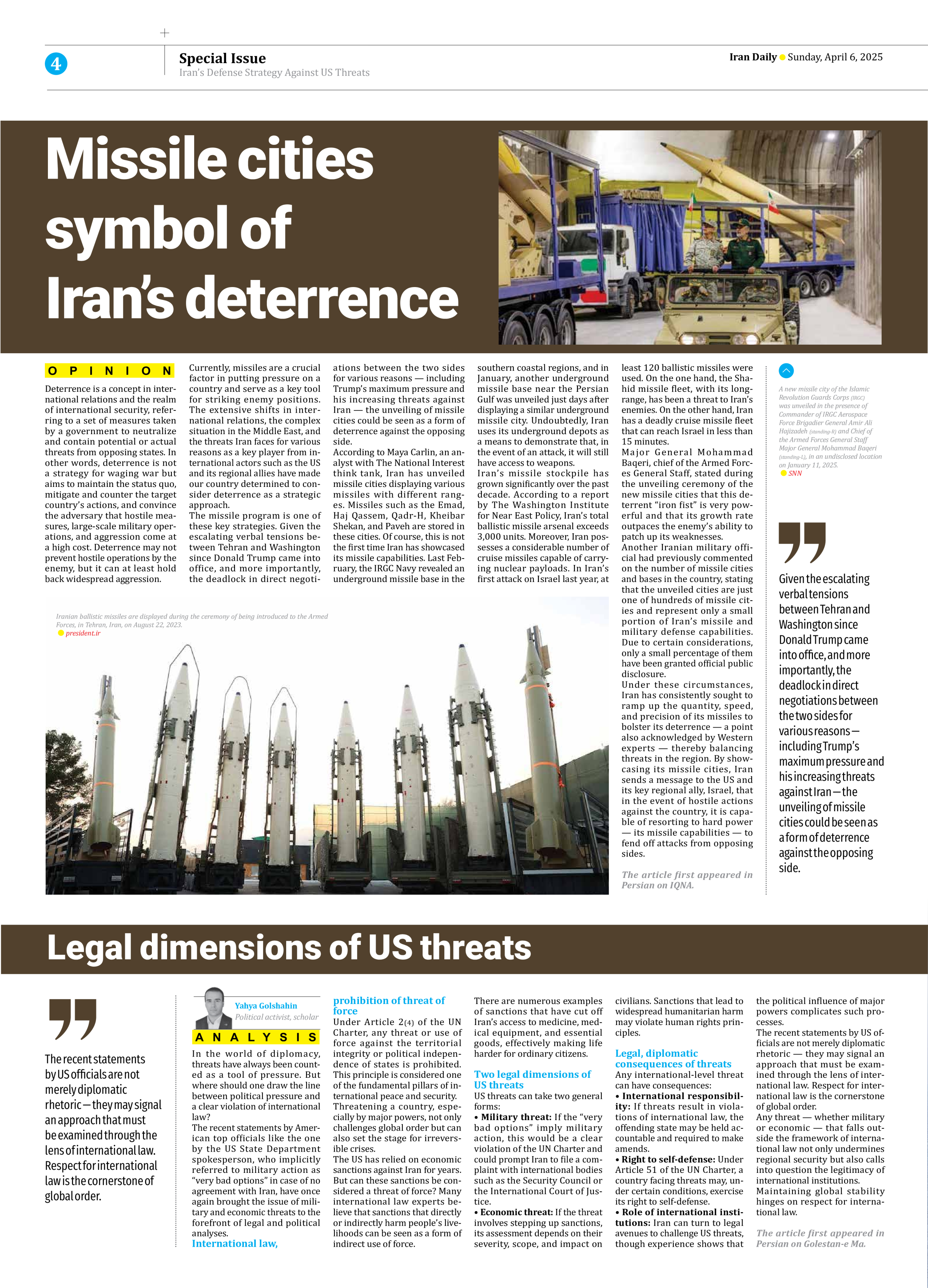
Missile cities symbol of Iran’s deterrence
Deterrence is a concept in international relations and the realm of international security, referring to a set of measures taken by a government to neutralize and contain potential or actual threats from opposing states. In other words, deterrence is not a strategy for waging war but aims to maintain the status quo, mitigate and counter the target country’s actions, and convince the adversary that hostile measures, large-scale military operations, and aggression come at a high cost. Deterrence may not prevent hostile operations by the enemy, but it can at least hold back widespread aggression.
Currently, missiles are a crucial factor in putting pressure on a country and serve as a key tool for striking enemy positions. The extensive shifts in international relations, the complex situation in the Middle East, and the threats Iran faces for various reasons as a key player from international actors such as the US and its regional allies have made our country determined to consider deterrence as a strategic approach.
The missile program is one of these key strategies. Given the escalating verbal tensions between Tehran and Washington since Donald Trump came into office, and more importantly, the deadlock in direct negotiations between the two sides for various reasons — including Trump’s maximum pressure and his increasing threats against Iran — the unveiling of missile cities could be seen as a form of deterrence against the opposing side.
According to Maya Carlin, an analyst with The National Interest think tank, Iran has unveiled missile cities displaying various missiles with different ranges. Missiles such as the Emad, Haj Qassem, Qadr-H, Kheibar Shekan, and Paveh are stored in these cities. Of course, this is not the first time Iran has showcased its missile capabilities. Last February, the IRGC Navy revealed an underground missile base in the southern coastal regions, and in January, another underground missile base near the Persian Gulf was unveiled just days after displaying a similar underground missile city. Undoubtedly, Iran uses its underground depots as a means to demonstrate that, in the event of an attack, it will still have access to weapons.
Iran’s missile stockpile has grown significantly over the past decade. According to a report by The Washington Institute for Near East Policy, Iran’s total ballistic missile arsenal exceeds 3,000 units. Moreover, Iran possesses a considerable number of cruise missiles capable of carrying nuclear payloads. In Iran’s first attack on Israel last year, at least 120 ballistic missiles were used. On the one hand, the Shahid missile fleet, with its long-range, has been a threat to Iran’s enemies. On the other hand, Iran has a deadly cruise missile fleet that can reach Israel in less than 15 minutes.
Major General Mohammad Baqeri, chief of the Armed Forces General Staff, stated during the unveiling ceremony of the new missile cities that this deterrent “iron fist” is very powerful and that its growth rate outpaces the enemy’s ability to patch up its weaknesses.
Another Iranian military official had previously commented on the number of missile cities and bases in the country, stating that the unveiled cities are just one of hundreds of missile cities and represent only a small portion of Iran’s missile and military defense capabilities. Due to certain considerations, only a small percentage of them have been granted official public disclosure.
Under these circumstances, Iran has consistently sought to ramp up the quantity, speed, and precision of its missiles to bolster its deterrence — a point also acknowledged by Western experts — thereby balancing threats in the region. By showcasing its missile cities, Iran sends a message to the US and its key regional ally, Israel, that in the event of hostile actions against the country, it is capable of resorting to hard power — its missile capabilities — to fend off attacks from opposing sides.
The article first appeared in Persian on IQNA.







